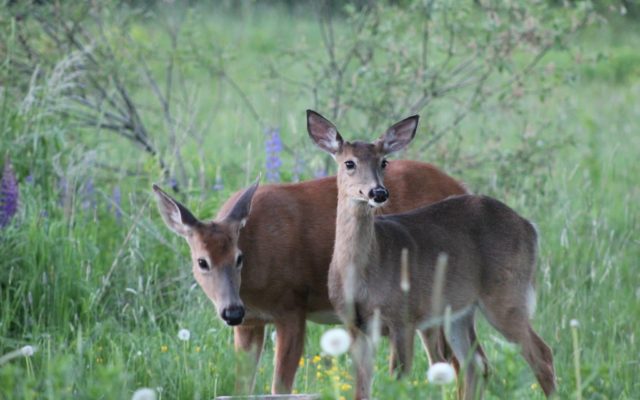
COVID-19 found in whitetailed deer
By Pete Warner, Bangor Daily News Staff
COVID-19 has been detected in whitetailed deer.
A study of blood samples from 481 wild deer in four states found 33 percent contained antibodies of SARS-CoV-2, the virus that causes COVID-19, the U.S. Department of Agriculture reported recently.
In samples collected from March 2020 to March 2021, deer from Pennsylvania, New York, Michigan and Illinois showed exposure to the disease. The highest incidence (67 percent) was found in Michigan.
While the USDA said it is likely deer in other states have also been exposed to the virus, the discovery is not being actively investigated by the Maine Department of Inland Fisheries and Wildlife. Local biologists are more concerned with a fatal illness found in deer and are advising hunters to follow safety recommendations when processing deer to limit exposure to any possible diseases.
“We’re not directly involved in any research related directly to deer and COVID,” said DIF&W deer biologist Nathan Bieber, “so I don’t really know if Maine’s deer have been exposed and developed antibodies like some of the other studies have found.”
What the findings of the USDA’s study mean is not clear.
“There is no evidence that animals, including deer, are playing a significant role in the spread of SARS-CoV-2 to people,” the USDA said. “Based on the available information, the risk of animals spreading COVID-19 to people is low.”
Maine doesn’t have any plans to test deer for COVID-19 antibodies, Bieber said, given the limited scope of USDA study and the lack of detailed information available about any potential issues stemming from the findings.
It is not known how wild deer were exposed to the coronavirus and the USDA report said that none of the animals appeared to be affected by it.
“It doesn’t look right now like the deer that have either had COVID antibodies or COVID are actually showing symptoms of the disease,” Bieber said.
Captive deer experimentally infected with SARS-CoV-2 as part of a USDA Agricultural Research Service study also did not show clinical signs of illness.
The USDA Animal and Plant Protection Service did the study to look at deers’ susceptibility to SARS-CoV-2 and to find out whether they might serve as reservoirs for the virus. Researchers say that might create the potential for the virus to mutate and spread to other animals and to people.
It is not known whether there is any possibility of transmission of COVID-19 from deer to humans. People generally are infected through the spread of respiratory droplets and the virus has not been found in muscle tissue (meat) that might be consumed by deer hunters.
The USDA plans to do more testing to determine how the deer were exposed to the virus and whether there is any threat to those populations, other wildlife or people.
The Missouri Department of Conservation will this fall be gathering deer samples in conjunction with USDA efforts to expand its testing, according to the Springfield News-Leader.
In the meantime, Maine’s biologists will be keeping a watchful eye on local deer.
“Right now it’s kind of very early on in the sort of research that’s happening and it’s more academic in nature,” Bieber said. “There doesn’t appear to be a lot in terms of management implications right now, but if that changes we may have to reevaluate what we’re doing.”
Of greater concern is protecting Maine deer against the arrival of Chronic Wasting Disease.
The fatal brain disease, similar to mad cow disease in cattle, is found in whitetailed deer, moose, mule deer, caribou and elk. It is killing populations in 25 states and two Canadian provinces, and has been found as close as Pennsylvania and New York.
Chronic Wasting Disease is not known to be transmitted to humans, but can survive outside a living host for many years. It has a 100 percent mortality rate in deer.
“We don’t have Chronic Wasting Disease here or anywhere all that close, but we’d really like to keep it that way,” Bieber said.
Bieber said DIF&W safety recommendations about field-dressing wild game and processing the meat can go a long way toward limiting people’s exposure to unwanted diseases or germs that could be spread by deer and other animals.
“Ideally, people are wearing gloves when they’re processing their deer and having clean tools and not messing around with some of the higher-risk materials like brain and spinal cord,” Bieber said. “Who doesn’t have gloves nowadays? You might as well use them.”
USDA recommendations for processing live game include not allowing contact between wildlife and domestic animals, including dogs. Hunters also should not harvest animals that appear sick or are found dead.
Meat should be kept clean and cooled down quickly, while efforts should be made to avoid cutting through the backbone and spinal tissues. The brains should not be eaten.
Knives, processing equipment and surfaces should be cleaned and disinfected, and hands should be washed thoroughly with soap and water.